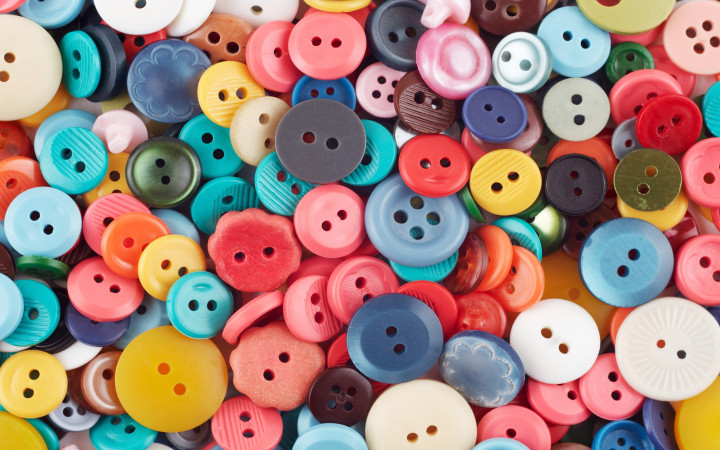Today’s Wonder of the Day was inspired by Jadaci. Jadaci Wonders, “How do buttons work?” Thanks for WONDERing with us, Jadaci!
They're small. We usually don't give them much thought. But they're often very important to us. What are we talking about? Buttons, of course!
No one really knows who invented the button or when. Archeologists have found primitive devices used to fasten clothes together dating back as far as 3,000 B.C. These devices, though, weren't really buttons like we think of them today.
It probably wasn't until the 1200s in Europe that buttons, as we know them today, were invented and became popular. From the outset, though, they weren't common items that everyone had access to. Instead, they were often miniature works of art that were seen as symbols of rank and wealth.
In fact, many old buttons can now be found in museums and private collections all over the world. By the 1800s, artisans were crafting buttons out of all sorts of materials, including precious metals, jewels, shells, animal horns, wood, clay and even expensive cloth, like silk.
In the late 1800s and early 1900s, the invention of manufacturing machines led to mass production of plastic buttons like the ones that are on the clothing we wear today. Instead of works of art, these buttons are functional. They have a job to do, which is to keep your clothes fastened together and help keep the weather out!
For example, you may have heard the phrase “button up" from time to time. To “button up" means to fasten your clothes tightly — with buttons, of course! — to keep out the weather. Of course, we can use zippers to do this, too!
“Button up" can also be used more generally to mean to close something securely or to finish up the details of an ongoing project. For example, you might “button up" a tool shed before winter arrives, or you might “button up" the citations for a research paper for school.
All these meanings refer back to the button's purpose in fastening things together. If your teacher tells you to “button up" while she's talking, that means you should probably fasten your lips together, stop talking and pay attention!
As you start to pay more attention to buttons and the role they play in your day-to-day life, you might notice a couple of interesting things. For example, have you ever noticed how the top and bottom buttonholes on a dress shirt are horizontal (side-to-side) rather than vertical (up and down)?
Why is that? It's purely practical. Vertical buttonholes allow buttons to be fastened more easily. That means they can also come undone more easily. Making the top and bottom buttonholes horizontal makes them stronger and less likely to come undone, which is important since the neckline (top) and the waistline (bottom) areas of a shirt receive more stress from pulling and tugging and tucking than the other areas of your shirt.
You might also notice that men's and women's shirts button from different sides. On men's shirts, the buttons are on the right (as you wear the shirt). On women's shirts, the buttons are on the left.
The historical reason for this is that, when buttons first became popular, most men buttoned their shirts themselves. Since most people are right-handed, it made sense to put the buttons on the right side of the shirt (again, as you're wearing the shirt and looking down at your buttons) for convenience.
Women at that time, on the other hand, usually had maids who would help them get dressed. Having the buttons on the left side meant that, to the maids trying to button the clothing, they would be on their right side and easier to button.
Why didn't this change when maids became less popular? Sort of like the QWERTY keyboard, it just became common practice and no one ever thought it was important enough to change!




